Safety & Health Week
Join us on May 6 through 10 to raise awareness of Safety Week. Each person, regardless of their job duties, shall always put the safety of themselves and others at the upmost priority; especially in construction, there is a higher risk of injuries, illnesses, and incidents.
In construction, there is always the potential of being at risk and exposed to hazards daily. Without proper safety practices and safety training, injuries, health risks, and even death can occur. Safety is crucial in both the workplace and construction sites. Given that, it should be the number one priority for employers, employees, and anyone who could be exposed to these hazards and risks.
What Is Safety?
Safety is being protected from harm, danger, or injury. It involves taking proactive steps and precautions to prevent exposure to danger, minimize risks and ensure all workers are safe in all different types of environments. Safety extends across personal, occupational, public and private domains. Safety implementation at all levels creates safe working conditions for people and the community.
How To Work Safely
To practice proper safety at work, it is important to make sure you are following the correct procedures and rules at your workplace including wearing the proper personal protective equipment (PPE), such as eye protection, head protection, high visibility vests, work boots, etc. It is equally as important to have the proper safety training and be familiar with the safety policies and guidelines as well as the hazards at your workplace to ensure that you are protected and safe.
But safety isn’t always a physical issue. There are many different types of situations that we may find ourselves in where our safety, physical, mental, and environmental can be affected.
Types of Safety
There are many types of safety such as physical, environmental, psychological, and biological.
Physical safety refers to the well being and physical health of the worker ensuring that no accidents or injuries occur. By implementing and following safety procedures such as wearing the correct personal protective equipment (PPE), can provide a safe and comfortable environment for all.
Environmental safety involves ensuring that workplaces are free from hazards such as chemical spills, fires, tripping hazards and electrical hazards.
Psychological safety encompasses the overall wellbeing of the employees. Having strict protocols for dealing with harassment at the workplace is important and ensuring that employees have the tools to reduce injury and stress is ideal. Protecting employees from exposure to biological hazards is also very important, especially following the COVID-19 outbreak. Guidelines and procedures showing proper sanitation and use of PPE is very important and should be practiced in every workplace.
3 Points of Safety
Evaluation, Education and Enforcement are known as the ‘3 E’s’ in workplace safety
Evaluation: Evaluate and ensure the environment you are working in is safe and has no hazards or risks that could affect you negatively
Education: Educating yourself and your employees in the workplace is very important as it allows people to better understand their rights and identifies the hazards and risks, they may be dealing with in the workplace, giving them the proper procedures and tools to reduce their risk of injury.
Enforcement: Enforcing Safety in the workplace is a must for all employers. Due diligence such as following a progressive discipline policy for safety infractions will not only act as a deterrent for future behaviour but may also be used in a Ministry of Labour, Immigration, Training and Skills Developmentcourt case in your defense.
Learn More
To learn more about how you can ensure due diligence and protect your workers, contact us at 905-669-5444 or info@safetyfirstconsulting.ca for more information on our health and safety consulting. Safety First will provide your company with the assistance required to achieve compliance with government health and safety regulations

